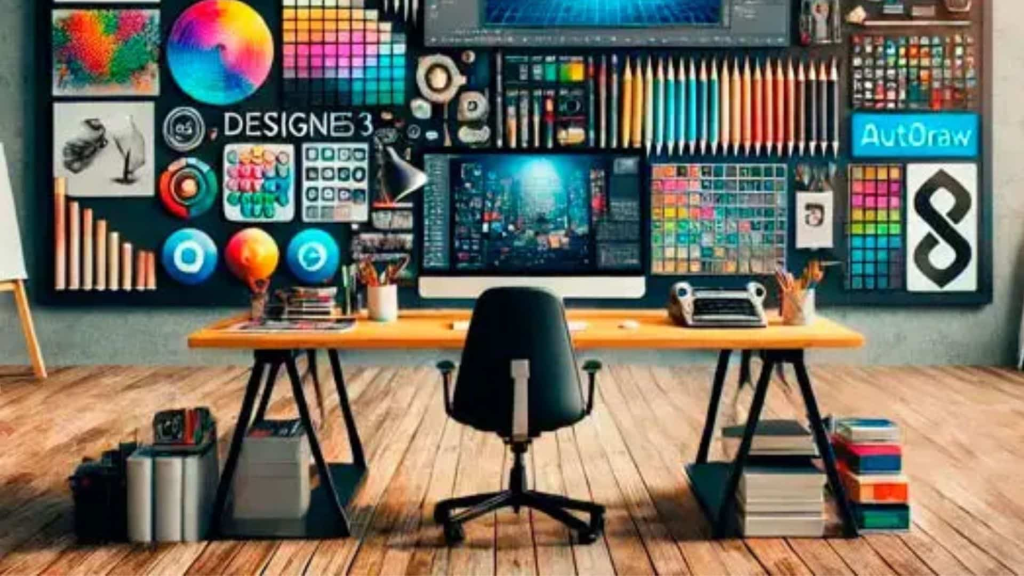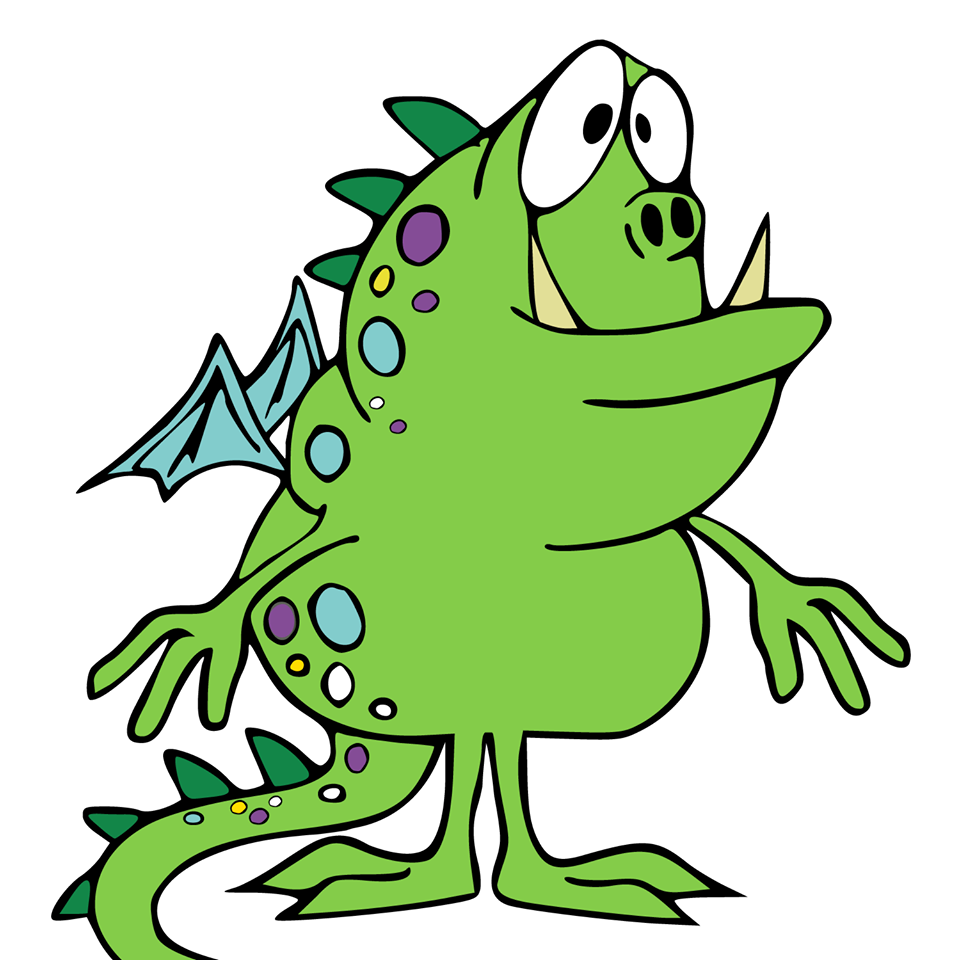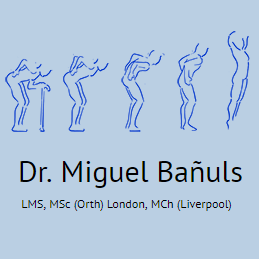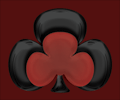Graphic Design Trends 2025 are poised to revolutionize how brands communicate visually in an ever-evolving marketplace. As businesses strive to capture consumer attention, understanding the upcoming graphic design color trends 2025 will be crucial in shaping brand identities. Expect to see a wave of modern graphic design styles characterized by bolder color palettes, innovative typography trends 2025, and the integration of interactive visual elements. Sustainability and conscious aesthetics will also play a pivotal role, reflecting a growing demand for brands to resonate with eco-conscious audiences. In this dynamic landscape, harnessing these trends can enhance brand engagement and foster lasting connections.
As we look ahead to the future of visual communication, the graphic design landscape will undoubtedly undergo significant transformations that define artistic expression and functionality. Anticipated trends will not only showcase innovative approaches to color schemes and typography but will also emphasize the importance of sustainability in design practices. The rise of interactive and dynamic design elements will transform how audiences engage with content, making user experience a top priority. Embracing these emerging concepts will enable brands to communicate effectively and build strong visual narratives that resonate deeply with their target demographics. Ultimately, staying ahead in this evolving field will require a keen awareness of both aesthetic preferences and technological advancements.
The Evolution of Visual Communication
In today’s fast-paced digital landscape, the essence of what makes a brand memorable has transformed significantly. As visual stimuli bombard us from every angle, brands must harness the power of graphic design to capture the attention of intentional audiences, making a meaningful statement in the oversaturated market. With the rise of advanced technologies and shifting cultural landscapes, 2025 is set to usher in dynamic trends that dictate how brands express their values visually.
Emerging trends in graphic design are not mere aesthetic choices; they function as critical tools for engagement. With the increasing significance of visual storytelling, companies must align their design strategies with contemporary consumer preferences, ensuring they resonate emotionally with their target market. This evolution reflects a larger narrative of adaptation and response to an ever-changing visual culture, making it essential for brands to embrace innovative design to thrive.
Bold Color Psychology and Graphic Design Color Trends 2025
Color continues to reign supreme in the realm of graphic design, wielding immense psychological influence on audiences. As we venture into 2025, designers are moving towards bolder and more saturated palettes, reflective of the emotional connections brands seek to forge. Earthy Maximalism stands out, with its vibrant terracotta and deep forest greens taking center stage. These hues not only elevate brand identity but also embed a sense of authenticity and commitment to environmental stewardship.
On the other end of the spectrum, Electric Gradients are returning, yet they are now infused with a renewed sophistication. Designers are crafting complex, multi-directional gradients that breathe life into their work, transforming flat design elements into thought-provoking experiences. Monochromatic Sophistication takes this a step further, inviting brands to explore the depth of single color families, where nuanced shades and tints can craft cohesive and unforgettable visual narratives. As we embrace these new trends, the relevance of color in our graphic design strategies becomes magnified, serving as a pivotal element in brand storytelling.
Revolutionary Typography Trends in Graphic Design
Typography, the art of arranging type, is undergoing a renaissance that beautifully marries readability with artistic expression. As we look at the typography trends for 2025, the exploration of Variable Fonts is particularly noteworthy. These innovative fonts adapt fluidly to different contexts, ensuring a seamless user experience across platforms, making them not only functional but also visually appealing.
Another exciting trend is the Experimental Serif Revival, which reinterprets traditional serif typefaces with contemporary flair. This revitalization breathes new life into long-established designs, inviting a fresh look while maintaining readability. The integration of Kinetic Typography is also on the rise, bringing an enchanting dynamic to text through subtle animations that engage users, making them more than just static elements. The trend of Mixed-Scale Hierarchies further emphasizes this evolution, blending dramatically varied text sizes within a single design to create a striking visual hierarchy that commands attention.
Minimalist Maximalism: Balancing Simplicity and Impact
The trend of Minimalist Maximalism in graphic design presents an intriguing contradiction where simplicity meets depth. This stylish approach supports clean, uncluttered layouts while boldly emphasizing elements that are meant to draw viewer attention. Strategic White Space Usage stands at the forefront, as designers carefully curate negative space to make key components stand out, enhancing overall aesthetics.
Integrating Bold Geometric Shapes as focal points amidst minimalism offers a striking contrast that heightens visual interest. This is complemented by Selective Detail Complexity, which allows for intricate details to be accentuated in specific areas of a design. By fusing simplicity with boldness, brands can achieve compelling visual aesthetics that retain clarity while making impactful statements.
Sustainable Design Aesthetics
Sustainability is not just a trend; it is a necessity that shapes modern graphic design. In 2025, brands are increasingly gravitating towards Sustainable Design Aesthetics that not only communicate their environmental commitment but also resonate with consciousness among consumers. This approach involves making informed visual choices while adopting production methods that prioritize ecological responsibility.
Organic Shape Integration plays a pivotal role, as designers draw inspiration from the natural world, crafting visuals that evoke feelings of harmony and authenticity. Additionally, Recycled Visual Elements demonstrate creativity by repurposing existing design components, thereby minimizing waste. Earth-Tone Palettes are leading the charge, embracing colors that mirror the environment and evoke a sense of groundedness and integrity.
Retro-Futurism and Nostalgic Modernism
As we step into the future of graphic design, the past is becoming an increasingly robust source of inspiration. Retro-Futurism, a captivating style, blends an imaginative view of tomorrow with the nostalgic aesthetics of yesteryear. By embracing elements of the Y2K era, designers are allowing the playful color palettes and bold graphics of the late 1990s and early 2000s to influence contemporary design.
This trend encapsulates a longing for familiarity while simultaneously pushing innovation forward. By leveraging iconic shapes and themes from earlier decades, brands can forge emotional connections founded on shared memories, creating a unique juxtaposition that speaks to both older and younger generations alike.
Interactive and Dynamic Visual Elements
In the evolving landscape of graphic design, interactivity and dynamic visual elements are becoming essential components. Digital platforms are pushing the boundaries of creativity, allowing designers to incorporate Micro-Animation Integration, which adds subtle movements that elevate the user experience. This engaging tactic not only draws attention but also guides the viewer’s focus to crucial areas, enhancing communication.
Parallax Scrolling Effects inject depth and motion into static content, encouraging users to explore and interact with designs in unprecedented ways. Moreover, Interactive Infographics bridge the gap between data and design, transforming complex information into engaging visuals that resonate with audiences, making the overall messaging more compelling. These trends are paving the way for a new era of immersive design.
Inclusive Design and Cultural Sensitivity
As designers embrace the principles of inclusive design, the focus on accessibility and cultural sensitivity becomes paramount in contemporary graphic practice. Adopting inclusive design practices ensures that the artwork communicates effectively across diverse audiences, respecting different backgrounds and experiences. This approach moves beyond mere compliance, striving to create meaningful engagement that resonates with everyone.
Culturally sensitive design recognizes and celebrates the rich tapestry of human experience, utilizing visuals that reflect a multitude of perspectives. By prioritizing inclusivity in design, brands cultivate credibility and trust among consumers, ultimately fostering deeper relationships and demonstrating genuine commitment to representing diversity in visual communications.
Frequently Asked Questions
Understanding the most crucial graphic design trends for 2025 can be particularly beneficial for small businesses. It is imperative to consider sustainable aesthetics, bold color options, and clean typography to capture audience interest while conveying brand values effectively.
Brand consistency is certainly influenced by the latest graphic design trends, which prioritize adaptable brand systems that can evolve gracefully. Meanwhile, for digital platforms, variable fonts and kinetic typography emerge as standout choices, ensuring effective communication that retains visual intrigue.
Conclusion
As we dive into the world of graphic design trends for 2025, we find ourselves at the intersection of innovation, responsibility, creativity, and accessibility. The exciting trends emerging paint a vibrant portrait of the future, emphasizing the importance of bold yet thoughtful design choices. Organizations have the opportunity to craft visual identities that not only captivate but also contribute positively to ongoing cultural conversations.
For those ready to embark on a journey of transformation, collaborating with design professionals who are attuned to these trends will be instrumental. Such partnerships can help brands navigate their unique contexts, allowing them to implement these emerging trends effectively and elevate their visual communications.
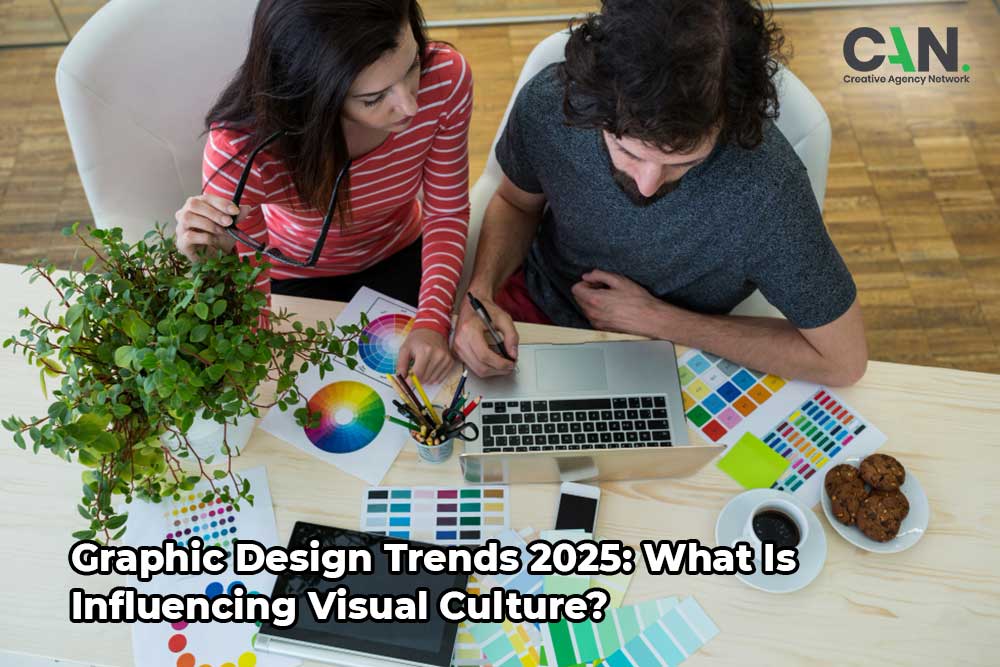
Embracing Graphic Design Trends for 2025
As we head into 2025, embracing the latest graphic design trends is not just a matter of aesthetics, but rather a critical component of brand strategy. Organizations that harness the power of bold color palettes, innovative typography, and sustainable design will differentiate themselves in a crowded marketplace. An understanding of the nuanced shifts towards minimalist maximalism and retro-futurism can elevate a brand’s visual identity, allowing it to resonate more meaningfully with contemporary audiences. The trends advocate for creativity that respects cultural sensitivities, ensuring that designs are inclusive and impactful.
Key strategies to consider include:
– **Adopting vibrant color schemes** that reflect current societal values and environmental consciousness.
– **Utilizing engaging typography** that harmonizes with digital platforms while enhancing readability.
– **Incorporating sustainable design principles** to both reduce ecological impacts and communicate brand values effectively.
By mastering these trends, brands not only enhance their visual communication but also foster deeper connections with their audiences.
The Future of Graphic Design and Brand Identity
The evolution of graphic design trends signals an exciting future where creativity meets responsibility. As brands look to establish their identities in 2025 and beyond, the most successful will be those who are willing to innovate while maintaining a sense of authenticity and sustainability. The shift towards interactive and dynamic visuals highlights the importance of engaging consumers in an experience rather than merely delivering a message. This engagement fosters loyalty and enhances brand perception through careful consideration of design elements.
To thrive in this evolving landscape, brands should focus on:
– **Alluring interactive designs** that capture attention and enhance user experience.
– **Emphasizing inclusivity** in design to ensure accessibility for all consumers.
– **Tapping into nostalgic themes** that resonate emotionally with target demographics.
In conclusion, by weaving these aspects into their graphic design practices, brands can craft memorable identities that resonate well with modern audiences while paving the way for future trends.

